Safer Chemicals Research Milestones
On this page, view by decade:
EPA researchers and their partners embrace the principles of green chemistry to produce safer chemicals. They design technologies for faster toxicity testing, and tools to manage chemical risks. Here are some of our most important research achievements.
2020s

2024-EPA Researchers Develop a Chemical Category-Based Approach to Prioritize PFAS for Data Collection
Congress directed EPA to develop a process to prioritize which PFAS should be subject to additional research based on their potential for human exposure, toxicity and other available information. To help meet these requirements, EPA researchers developed a chemical category-based approach to help prioritize PFAS for further data collection efforts.

2024-EPA Applies Developmental Neurotoxicity in Vitro Testing Battery (DNT-IVB) Data to Inform Decision-Making
The Organisation for Economic Cooperation and Development (OECD) endorsed a suite of in vitro assays developed to screen chemicals for potential developmental neurotoxicity (DNT). EPA researchers led the development of this assay battery, which comprises 17 new approach methods (NAMs). In 2024, data collected using the DNT NAMs battery was used by EPA’s OCSPP to support regulatory decision making on several chemicals.
Published Study of PFAS in vitro toxicity testing for developmental neurotoxicity

2024-EPA Mixtures Research Supported the First National Primary Drinking Water Regulation for PFAS
PFAS mixtures research conducted by ORD investigators demonstrated that low levels of multiple PFAS that individually would not likely result in adverse health effects may pose health concerns when combined in a mixture. This research supported a hazard index approach to deriving final maximum contaminant levels (MCLs) for mixtures of four PFAS in the first NPDWR for PFAS that was finalized in 2024.
Final PFAS National Primary Drinking Water Regulation

2024-EPA Research Supports the 6PPD/6PPD-quinone Action Plan
When the vehicle tire preservative, 6PPD, reacts with ozone in the air, it forms 6PPD-quinone which is considered a contaminant of emerging concern. 6PPD-quinone enters waterways through stormwater and is linked to coho salmon death. In 2024, EPA developed a 6PPD/6PPD-quinone Action Plan for FY25 -28 that will focus and coordinate activities across EPA’s programs. The Action Plan is supported by multiple ongoing research efforts coordinated between ORD, the Office of Water, Region 10, and other external partners.

2024-EPA Advances Use of NAMs in Ecotoxicology
The ECOTOX Knowledgebase was cited in a response letter to a tribal petition EPA granted to address risks to the environment from 6PPD and the 6PPD-quinone. EPA used ECOTOX to conduct literature searches and screening of ecotoxicity data to support granting this petition. EPA staff won several awards for their ecotoxicology research and helped to organize a special issue of Environmental Toxicology and Chemistry focused on New Approach Methodologies (NAMs) in Ecotoxicology.
Original Petition & EPA's Response Letter
2024-EPA Provides Public Access to Updated Data for Millions of Chemicals

The EPA has updated several computational tools to aid in decision-making and chemical evaluation for health and environmental effects. In FY24, updates were made to the CompTox Chemicals Dashboard (Versions 2.3 and 2.4), SeqAPASS (Version 7.1), and the High-Throughput Toxicokinetics R Package (httk) V2.3.0. These updates include new data on chemical susceptibility across species, including threatened and endangered species, and enhanced predictions for gut absorption and other properties for over 400 chemicals.
Science Matters Article on HTTK Release
2024-A Validated Method for Vapor Phase PFAS
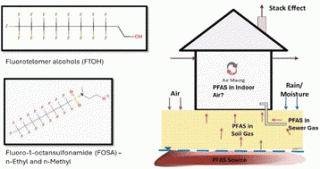
There is currently no standard sampling and analysis method for vapor phase PFAS in soil gas, sewer gas, and indoor air. In this research, EPA scientists targeted seventeen PFAS compounds to develop and validate a method applicable to soil gas, sewer gas, and indoor air samples utilizing thermal desorption-gas chromatography/mass spectrometry/mass spectrometry (TD-GC/MS/MS).
Laboratory Development of Vapor Phase PFAS Methods
2023-Advancing the use of New Approach Methods through Training, Outreach and Stakeholder Engagement
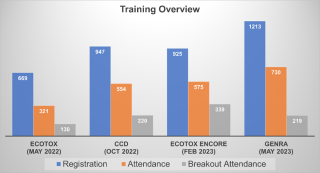
EPA led training, outreach and stakeholder engagement activities aimed at encouraging the use of New Approach Methods (NAMs) to inform decisions made about health effects of chemicals. These activities included: State of the Science on Development and Use of NAMs for Chemical Safety Testing Conference in October that held three NAMs training sessions and informational materials demonstrating how to use EPA NAMs resources. EPA held three training sessions in 2023 that demonstrated how to use the Computational Toxicology (CompTox) Chemicals Dashboard, ECOTOX and GenRA. To supplement these live trainings and provide a basic overview for new users EPA created NAMs Training Tool Tips videos that cover the key features of EPA tools and how to use them.
2023-EPA Researchers Conduct Critical PFAS Mixtures Study

EPA researchers designed and executed the first study to evaluate the combined developmental toxicity of two PFAS chemicals acting together as a mixture rather than as separate, isolated compounds. The study provided laboratory data to support the use of relative potency factors and other dose addition-based approaches for estimating PFAS mixture effects.
2023-Endocrine Disruption Research

EPA researchers released a draft White Paper for public comment titled “Availability of New Approach Methodologies (NAMs) in the Endocrine Disruptor Screening Program (EDSP)” that describes validated NAMs that EPA may now accept as alternatives for certain EDSP tests. The draft White Paper presents several NAMs that would allow EPA to screen chemicals faster and more efficiently using alternatives to vertebrate animal testing and other in vitro, or in-the-laboratory, assays. The approaches described in the draft White Paper would accelerate the pace of screening of all chemicals, including pesticide active ingredients, for potential impacts on the endocrine system, add efficiencies and decrease costs in the Agency’s review, and reduce animal testing.
2023-EPA Research on Informing Strategies to Improve Children's Health and Mitigate Health Disparities

EPA researchers summarized extensive research on how non-chemical stressors (such as maternal diet and behaviors), may modify responses to chemical exposures, leading to health changes in susceptible and vulnerable populations such as children. This report provides information to help public health officials and community leaders optimize their community environments and develop sound strategies to support children’s healthy development and mitigate health disparities.
2023-Assessing PFAS Toxicity

Toxicity assessments for two data poor PFAS chemicals, specifically Lithium bis [(trifluoromethyl)sulfonyl] azanide (HQ-115) and Perfluoropropanoic Acid (PFPrA), provided qualitative and quantitative toxicity information and final Human Health Toxicity Values. The information can enable risk assessors, in conjunction with exposure information, to assess the risks and make decisions about managing PFAS to protect human health and the environment.
Human Health Toxicity Assessment for HQ-115
Human Health Toxicity Assessment for PFPrA
PFAS Strategic Roadmap: EPA's Commitments to Action 2021-2024
2023-Releasing and Updating Online Chemical Safety Resources for Public Access
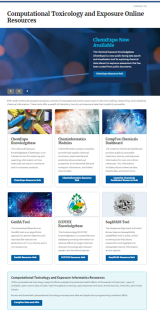
Computational Toxicology and Exposure Data APIs v2.0 includes new features, enhancements, and updates to the chemical microservice and hazard data microservices. Some updates include: New fields in the Chemical Details API; Batch Search functionality allowing up to 200 DTXSIDs (DSSTox Substance Identifier); New Data for Cancer Summary, Genetox, and Skin Eye Data
Version 2.2.1 of the CompTox Chemicals Dashboard includes a data-only update on ToxValDBv9.4 and OPERAv2.6. For more information, please see the CompTox Chemicals Dashboard Release Notes.
Cheminformatics Module Beta provide information on chemicals including high-quality chemical structures, experimental and predicted physicochemical properties, environmental fate and transport information, and appropriately linked toxicity data.
2022- PFAS Testing Strategy Helps Fill Knowledge Gaps

EPA is working to break the large, diverse class of PFAS chemicals into smaller categories based on similarities across defined parameters to deepen the understanding of the impacts of PFAS, including potential hazards to human health and the environment. Rather than individually evaluating each unique PFAS chemical, the National PFAS Testing Strategy allows EPA to quickly evaluate PFAS chemicals to inform decision making.
National PFAS Testing Strategy
2022- New Chemicals Collaborative Research Program: Innovative Science Under TSCA

This collaborative, multi-year research program brings innovative science to the review and risk assessment of new chemicals before they can enter the marketplace. Under the Toxic Substances Control Act (TSCA), ORD scientists are exploring ways to integrate New Approach Methodologies (NAMs) into new chemicals assessments and streamline chemical data submissions.
New Chemicals Collaborative Research Program
2022- EPA Updates New Approach Methodologies (NAMs) Work Plan and Provides Training Opportunities
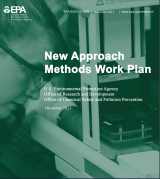
The updated EPA NAMs Work Plan describes near and long-term strategies to establish scientific confidence in NAMs and to show how NAMs can be applied to regulatory decisions. Under the Work Plan, EPA provided access to training resources and expanded engagement opportunities with stakeholders through the 3rd NAMs Conference, NAMs training pilot sessions on the ECOTOX Knowledgebase and CompTox Chemicals Dashboard, and new NAMs Training Catalogue which houses EPA NAMs resources.
Science Matters Newsletter: EPA Releases Updated New Approach Methodologies (NAMs) Work Plan
New Approach Methods (NAMs) Training
2022- EPA Expands Access to Chemicals Data Through Updated CompTox Chemicals Dashboard and Generalized Read-Across (GenRA)

The updated CompTox Chemicals Dashboard and GenRA include groundbreaking new features and more data to meet the evolving needs of chemical risk assessment. The new Dashboard release added 300,000 new chemicals and updated data regarding chemical effects on gene expression (High Throughput Transcriptomics or HTTr) and the structure of a cell (High Throughput Phenotypic Profiling or HTPP). The new GenRA update allows users to evaluate the relevancy of similar substances using predicted physical property and environmental fate information.
2022- International Competition Develops Next Generation Screening Technologies for Ecological Toxicity Testing

The EPA, along with other national and international government and industry partners, launched the EcoTox Technology Advancing Rapid Gene Expression-based Testing (TARGET) Challenge to develop and demonstrate high quality, low-cost high throughput transcriptomic technologies to screen chemicals for ecological hazards and taxa not currently represented in EPA’s suite of assays. The winning submission, from BioSpyder Technologies, Inc. of Carlsbad, California, is already being leveraged in research performed at the EPA.
2021 - EPA Researchers Develop Tool that Predicts How Organic Chemicals Transform in Different Environments

To better assess risk from chemical exposures, scientists developed the Chemical Transformation Simulator (CTS), a web-based screening tool that predicts how organic chemicals will transform in environmental and biological systems. Predictions from CTS can be used to provide a more holistic evaluation of how the manufacture and use of organic chemicals can impact humans and ecosystems.
2021 - EPA Announces Winners of the Innovative Ways to Destroy PFAS Challenge
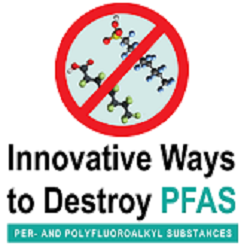
EPA announced the winners of the Innovative Ways to Destroy PFAS (per- and polyfluoroalkyl substances) Challenge, a partnership between federal and state agencies focused on identifying ways to destroy PFAS in concentrated aqueous film forming foam (AFFF), a type of firefighting foam. This challenge was part of EPA’s efforts to better understand and ultimately reduce the potential risks caused by these chemicals.
2021 – Database to Better Understand Chemicals with Limited Data Released

EPA released the Adverse Outcome Pathways (AOPs) database to gain a better understanding of the potential for adverse effects following exposures to chemicals that have limited toxicity data. The online database combines different data types (AOP, gene, chemical, disease, or pathways) to characterize adverse outcomes of chemicals of interest to human health and the environment.
Adverse Outcome Pathway Database (AOP-DB)--Basic Information
Adverse Outcome Pathway Database (AOP-DB)--Home
2021 – Study Advances Ability to Predict Effects of Chemical Exposures on the Thyroid

A series of key scientific papers published by EPA provided new insights into the sequence of molecular and cellular events called Adverse Outcome Pathways (AOPs) that can lead to thyroid disruption. The papers contribute to understanding of the AOPs that can lead to thyroid disruption and the degree to which they are useful for predicting adverse effects.
2021 – Advancing the use of New Approach Methods for Inhaled Chemicals

EPA researchers are developing New Approach Methods (NAMs) to model the effects of chemical inhalation, address scientific challenges, and fill important gaps in chemical safety research. A study on inhaled chemicals made substantial contributions to providing the scientific foundation for reducing the Agency’s reliance on animal inhalation studies by building confidence in the translation of data from inhalation NAMs.
2021 – Advancing Research on PFAS Exposure and Health Effects

Research is advancing the understanding of exposures and health effects from per- and polyfluoroalkyl (PFAS) substances to support risk assessment of the widely-used chemicals. Among the studies conducted, two highlight how research has provided scientific evidence to inform regulatory decisions for PFAS.
Our Current Understanding of the Human Health and Environmental Risks of PFAS
2021 – Assessing PFAS Toxicity

Toxicity assessments for the PFAS chemicals referred to as GenX Chemicals and PFBS provided qualitative and quantitative toxicity information and final Human Health Toxicity Values. The information can enable risk assessors, in conjunction with exposure information, to assess the risks and make decisions about managing PFAS to protect human health and the environment.
Learn about the Human Health Toxicity Assessment for PFBS
Human Health Toxicity Assessments for GenX Chemicals
Human Health Toxicity Assessment for Perfluorobutane Sulfonic Acid (PFBS)
PFAS Strategic Roadmap: EPA's Commitments to Action 2021-2024
2021 – Tool Improves Identification of Unknown Chemicals in Water, Soil and Other Samples

EPA and collaborators released a tool that can be used to help improve the transparency and reproducibility of non-targeted laboratory methods for identifying unknown and potentially toxic chemicals in the environment. The tool is expected to lead to broader use and acceptance of non-targeted analysis of water, soil and other types of samples for unknown chemicals that may be present.
Science Matters: EPA’s ENTACT Study Breaks New Ground with Non-Targeted Research
EPA’s non-targeted analysis collaborative trial (ENTACT): genesis, design, and initial findings
2021 – National PFAS Testing Strategy Developed

EPA released the National PFAS Testing Strategy, which reflects EPA’s work to prioritize per- and polyfluoroalkyl substances (PFAS), widely used and long-lasting chemicals, for additional toxicity testing. The national testing strategy will enable the Agency to obtain toxicity data and information on categories of PFAS chemicals to inform future regulatory efforts.
National PFAS Testing Strategy
2021 – TSCA Proof-of-Concept Case Study Report Released
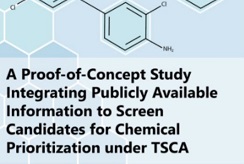
EPA released a report titled “A Proof-of-Concept Case Study Integrating Publicly Available Information to Screen Candidates for Chemical Prioritization under the Toxic Substances Control Act (TSCA)”, which integrates publicly available hazard, exposure, persistence, and bioaccumulation information for chemical substances. This data can be used to help inform the level of effort and resources needed to evaluate a specific substance for its toxicity.
Summary of the Toxic Substances Control Act
2021 – EPA Celebrates 5th Anniversary of the CompTox Chemicals Dashboard

Five years after its launch, the EPA’s CompTox Chemicals Dashboard continues to be the Agency’s ‘first-stop-shop’ for the delivery of information on chemical properties, structure, toxicity, exposure, and persistence. Advances in the Dashboard include real-time quantitative structure-activity relationship (QSAR) predictions for chemical property and toxicity endpoints, flexible searches including chemical and functional use, and support for mass spectrometry (mass and formula) and batch search functionality.
2020 – EPA Advances Work Under the New Approach Methods Work Plan

In June 2020, EPA published the New Approach Methods (NAMs) Workplan. Guided by this plan, EPA researchers are advancing the development of NAMs with work in high-throughput phenotypic profiling (HTPP), high-throughput transcriptomics (HTTr), and species extrapolation in the ecotoxicology domain. This work will allow EPA to continue to improve our understanding of chemical toxicity while reducing and refining the use of animals in chemical testing.
EPA New Approach Methods Work Plan: Reducing Use of Vertebrate Animals in Chemical Testing
2020 – EPA Updates the ECOTOX Knowledgebase

The ECOTOX Knowledgebase is a comprehensive, publicly available application that has been providing chemical environmental toxicity data on aquatic life, terrestrial plants, and wildlife for over 20 years. ECOTOX is updated quarterly - data are available for over 12,200 chemicals and 13,500 species. The ECOTOX Knowledgebase provides rapid access to toxicity data used for developing chemical benchmarks for water and sediment quality assessments, helping to protect both freshwater and saltwater organisms from short-term and long-term exposure.
2010s
2019 - Researchers Lead an International Effort to Study New Risk Assessment Methods

EPA scientists are leading members of the Accelerating the Pace of Chemical Risk Assessment (APCRA) consortium, a government-to-government initiative whose aim is to promote collaboration and dialogue on the scientific and regulatory needs for the application and acceptance of New Approach Methods in regulatory decision making. EPA Scientists led an international effort comparing no- and low- adverse effect levels (NOAEL/LOAELs) from traditional in vivo toxicity data with predictions from high throughput in vitro New Approach Methods. This case study demonstrated that disruption of important biological pathways and processes in high-throughput in vitro assays provided a conservative estimate of in vivo NOAEL/LOAEL values.
2018 - EPA Releases its Plan to Reduce Animal Testing

EPA releases a strategic plan to reduce the use of vertebrate animals in chemical testing. This will be accomplished with New Approach Methods, a group of new and developing technologies and methods that can be used to provide information on chemical hazard and risk assessment without using live animals. These approaches have been used to prioritize chemicals EPA is evaluating under the Toxic Substances Control Act.
Alternative Test Methods and Strategies to Reduce Vertebrate Animal Testing
2018 - Researchers Advance the Assessment of Thyroid Hormone Disruption

EPA scientists discovered a key indicator of thyroid hormone disruption effect – called heterotopia - on the developing brain. This discovery has revolutionized the assessment of thyroid hormone disruption by providing an apical endpoint that can be directly linked to earlier steps in the adverse outcome pathway and can be readily quantified.
2016 - EPA Launches CompTox Chemicals Dashboard

EPA launches the CompTox Chemicals Dashboard. The dashboard is a is a freely accessible online database that provides access to multiple types of data including physicochemical properties, environmental fate and transport, exposure, usage, in vivo toxicity, and in vitro bioassay. EPA and other scientists use the data and models contained within the dashboard to help identify chemicals that require further testing and reduce the use of animals in chemical testing.
2015 - EPA Studies Perfluorinated Chemicals

EPA publishes over 100 peer-reviewed papers between 2005-2015 on perfluorinated chemicals -- PFCs, PFOS, and PFOA. The studies led to decisions to phase out certain PFAS chemicals, which are a group of man-made chemicals found in a wide range of consumer products. There is evidence that exposure to PFAS can lead to adverse health outcomes in humans. In 2017, EPA launches a broad effort to address PFAS to identify actions to support local communities, enhance coordination with other partners, and increase research on the chemicals.
Research on Per- and Polyfluoroalkyl Substances (PFAS)
2015 - EPA Updates its Endocrine Disruptor Screening Program

EPA releases a plan to incorporate New Approach Methods into the Endocrine Disruptor Screening Program (EDSP). The plan calls for EPA scientists to develop a set of non-animal high-throughput assays that can serve as an alternative to the assays currently included in the EDSP tier 1 screening battery. This plan will leverage cutting edge technology to improve the agency's ability to fulfill its statutory mandate to screen pesticides and other substances for their ability to cause adverse effects by their interaction with the endocrine system.
Endocrine Disruptor Screening Program for the 21st Century (EDSP21) Workplan Summary
2014 - EPA and Partners Release EnviroAtlas

EPA, National Geographic Society, USGS, and others release EnviroAtlas--an interactive web-based tool that states, communities, and citizens can use to help inform policy and planning decisions that impact the places where people live, learn, work & play. EnviroAtlas provides geospatial data, easy-to-use tools and other resources related to ecosystem services, their stressors, and human health.
2014 - EPA Debuts a Dashboard for the Study of Endocrine Disruptors

EPA expands testing of chemicals for endocrine disruption in 2010. Four years later, EPA releases the “Endocrine Disruptor Screening Program in the 21st Century Dashboard, EDSP21,” to provide easy access to new data on the thousands of chemicals of interest to the program.
Endocrine Disruptor Screening Program (EDSP) in the 21st Century
2013 - EPA Publishes ToxCast Data

EPA releases ToxCast data on over 1,800 chemicals, making the data publicly available through a user-friendly online tool called the interactive Chemical Safety for Sustainability Dashboard (iCSS Dashboard) .
2011 - EPA and Partners Debut Tox21 Robot

EPA and other Tox21 collaborators unveil a new robot to screen 10,000 chemicals for potential toxicity. The environmental chemicals being screened are called the Tox21 library and were selected for their potential to disrupt biological pathways that may result in toxicity. Results from this screening help researchers prioritize chemicals for further in-depth investigation.
Toxicology Testing in the 21st Century (Tox21)
Tox21.gov
2010 - EPA Develops the Toxicity Reference Database

EPA releases the Toxicity Reference Database (ToxRefDB), which captures 30 years and $2 billion worth of animal toxicity studies previously only available through paper documents. ToxRefDB version 2.0 structures information from over 5,000 toxicity studies into a public resource for training and validation of predictive models.
ToxRefDB version 2.0: Improved utility for predictive and retrospective toxicology analyses
2000s
2009 - EPA Publishes Results of the Healthy Homes Survey

EPA and the U.S. Department of Housing and Urban Development publish results of a nationally-representative survey of pesticide residues in U.S. homes.
American Healthy Homes Survey Publication
2008 - Researchers Use EPA's Model to Predict Risk for Children in Landmark Study

Researchers use EPA’s Stochastic Human Exposure and Dose Simulation model to predict risk for children exposed to decks and play structures treated with chromated copper arsenate.
Stochastic Human Exposure and Dose Simulation (SHEDS) to estimate human exposure to chemicals
The SHEDS-Wood Model: Incorporation of Observational Data to Estimate Exposure to Arsenic for Children Playing on CCA-Treated Wood Structures
2005 - EPA Creates the National Center for Computational Toxicology

EPA creates the National Center for Computational Toxicology following a directive from Congress to conduct research to determine how computational toxicology can be used to better evaluate chemicals for potential human and environmental health effects.
About the National Center for Computational Toxicology (NCCT) (Archived January 19, 2017)
2005 - EPA Publishes its Biotechnology Research Strategy

EPA releases the Biotechnology Research Strategy and implements a program to help improve the science needed to inform Agency decisions about the risk and safety of biotechnology products.
EPA's Biotechnology Research Program
2001 - EPA Publishes Results of Exposure Study on Young Children

EPA publishes findings of the largest study to date of young children’s aggregate exposures to chemicals in homes and day care centers.
1990s
1998 - EPA Publishes Neurotoxicity Risk Assessment Guidelines

EPA produces the Guidelines for Neurotoxicity Risk Assessment to promote consistency in conducting risk assessments of chemicals and other toxic agents on the nervous system.
EPA’s Guidelines for Neurotoxicity Risk Assessment
1980s
1981 - Researchers Develop Computational Models

EPA develops computational models to predict toxicity and bioaccumulation potential of new and existing chemicals. This work supports the implementation of the Toxic Substances Control Act.
Computational Toxicology Research Fact Sheet: December 2018
1981 - Research Demonstrates Effects of Lead Exposure in Children

EPA research begins to demonstrate that low-level lead exposure in North Carolina children impairs hearing and cognitive function. These data subsequently contributed to the Centers for Disease Control and Prevention’s decision to lower the level of concern for lead exposure in children.
